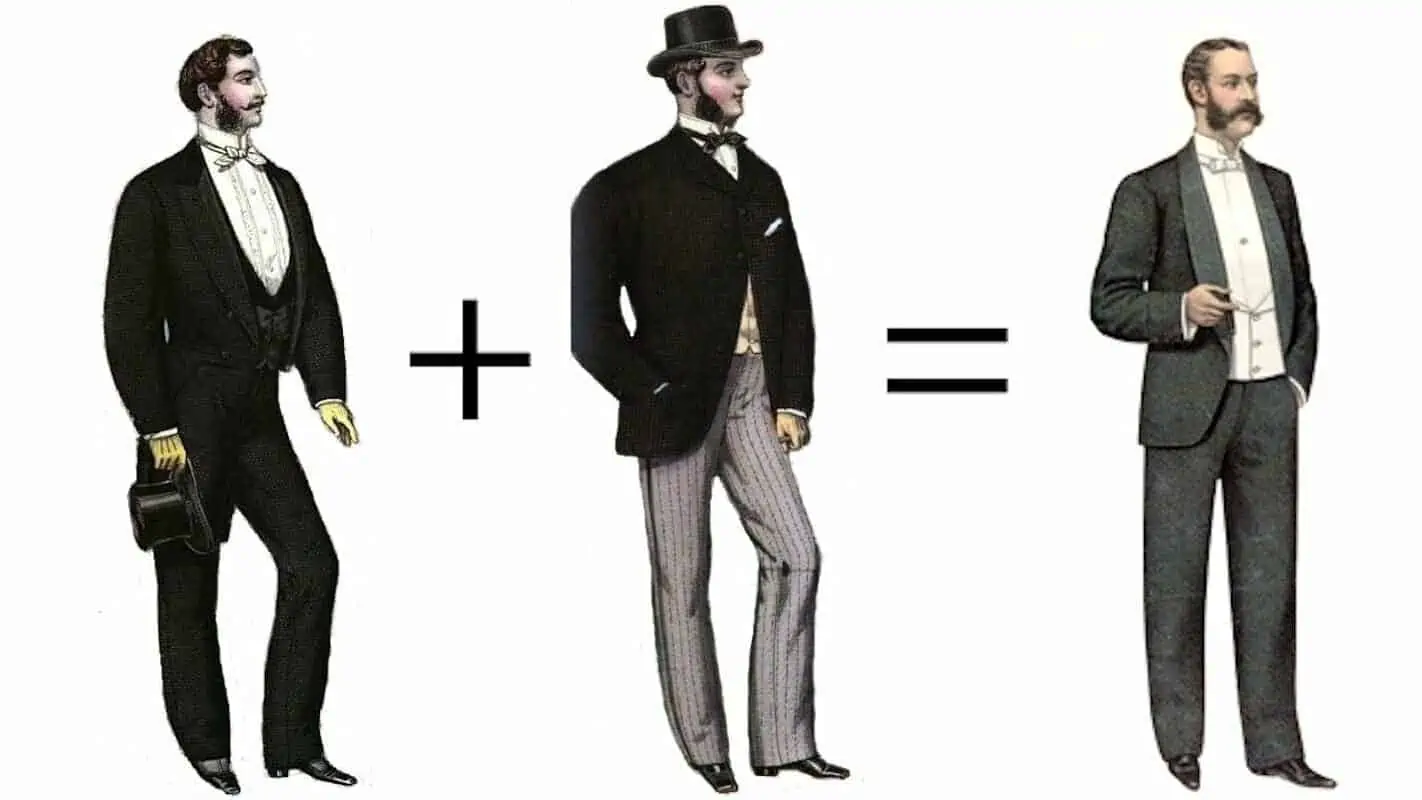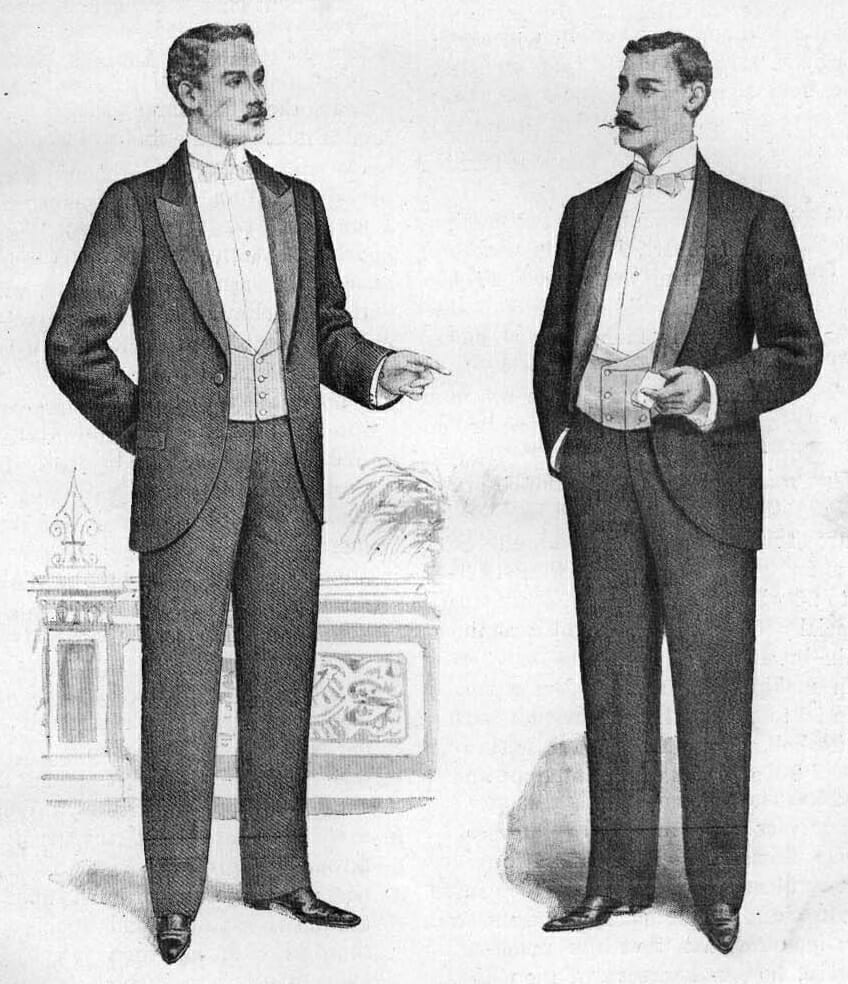
Evening dress is the proper attire, winter or summer, on all occasions after candlelight. There are two kinds of evening dress, formal (or “full” as it is sometimes vulgarly called) and informal.
The Complete Bachelor (1896)
1880s Etiquette
The last two decades of the nineteenth century saw the continuation of many of the themes of the earlier Victorian era. In particular, England continued to dominate men’s fashion and dress codes became increasingly precise. At the same time, casual developments in daywear began to creep into conservative evening attire setting the stage for the two-tier dress code we know today.
- 1880s Etiquette
- Dress Codes: Defining What is Appropriate for Morning and Evening
- Evening Exceptions: Dress Code Variances
- The Debut of the Evening Lounge Jacket
- The American Premiere of the Evening Lounge Jacket
- Dual Identity: Distinguishing the Dinner Jacket and Tuxedo
- Two-Tier Late Victorian Etiquette: What to Wear and Where to Wear It
- Formal Facts & Dress Decorum
Dress Codes: Defining What is Appropriate for Morning and Evening
The division of the social day remained as strict as ever: the dinner hour marked the end of “morning” pastimes and the beginning of evening formalities. Consequently, polite society was expected to change into evening dress before dining so that they may be prepared for any function they might attend afterward.
Also as before, evening dress was not to be seen prior to the seven or eight o’clock evening meal. Considering how often American etiquette authorities harped on this rule it appears that their countrymen still could not grasp that the only formal attire acceptable for daylight was morning dress.
Sundays continued to be an exception to the full-dress rule as polite society dressed more modestly on these evenings. And it was still best to avoid the custom altogether among groups who considered it an affectation. This included the middle classes, according to one British manual, who often viewed it as legitimate only for special occasions.
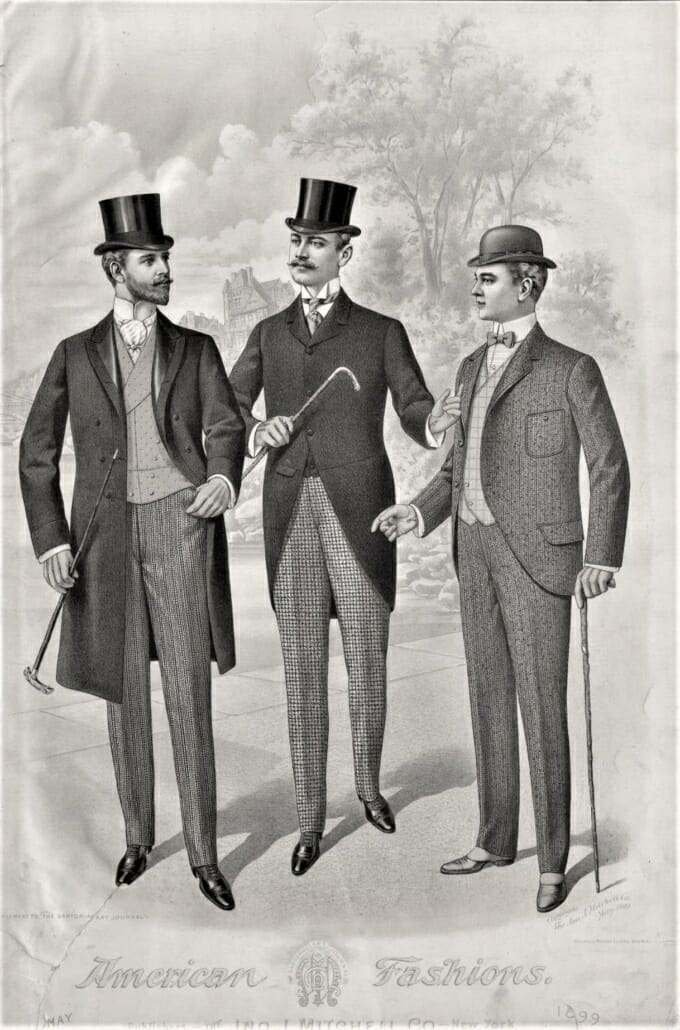
Evening Exceptions: Dress Code Variances
New to American etiquette guides of the late nineteenth century was an allowance for less formal attire when appropriate. Full dress remained mandatory for gentlemen at the most formal of evening affairs – weddings, the opera, theater parties, and formal dinners – but was now optional for social calls, small gatherings and public entertainments where ladies chose to forego full dress. In these latter situations, it was acceptable, even appropriate, to follow the women’s lead and opt for morning dress instead.
English gentry were also seeking an informal alternative to full dress but had no intention of appearing in day wear after candlelight. Instead, they modified existing evening dress by replacing its most impractical aspect with a more comfortable alternative.

The Debut of the Evening Lounge Jacket
English Origins
Just as the tailcoat had evolved from country riding attire to town day wear and finally to formal evening wear, so too did its substitute begin life on horseback. During the Victorian era, Britons and Americans were becoming more active in outdoor recreation such as shooting, riding and walking and they required more comfortable clothing for their new pastimes. As a result, English tailors in the 1850s produced the short lounge jacket (the predecessor of today’s suit jacket) to provide men with more freedom of movement than the long frock coats and morning coats customarily worn during the day.
Eventually, the lounge jacket found its way indoors as a smoking jacket when country squires had it made from the same soft velvet as their dressing gowns so it could absorb the odor of cigars that were smoked after dinner once the ladies had retired. “After this,” writes menswear author Nicholas Antongiavanni, “it was a short step for them to ask that it be made in black wool, with tailcoat trimmings, so that it was dignified enough to be worn in the dining room.”
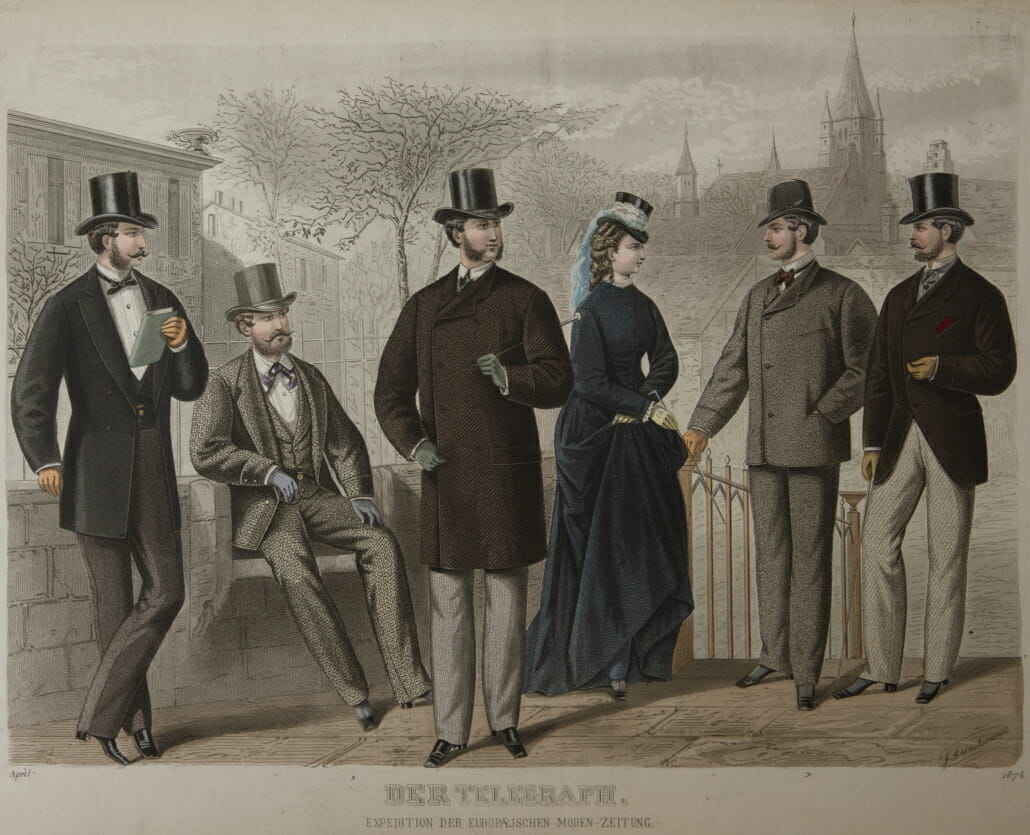
The new dining jacket’s legitimacy was assured when it was adopted by Queen Victoria’s eldest son, the Prince of Wales, who had a penchant for elegant but comfortable clothes. In 1865, legendary Savile Row tailors Henry Poole & Co. provided the 24-year-old future Edward VII with an early prototype which their Web site explains was worn for informal dinner parties at his Sandringham country estate. According to the company’s original ledgers, the Prince commissioned “a blue silk smoking jacket” and trousers of a matching fabric.
Another version of the Prince’s first encounter with the tailcoat alternative is proffered by menswear historian Nicholas Storey:
According to Lord Dupplin, his ancestor the late Victorian Lord Dupplin was a good friend of the Prince of Wales and, after one Season, he was invited onboard the Royal Yacht. He consulted the tailor Henry Poole over what to wear and an early version of the dinner jacket resulted. Apparently, he was lightly ribbed over it – but the Prince of Wales adopted the style for informal events the next Season and so, naturally, it started to catch on.
Regardless of how or when the Prince discovered the evening jacket, we do know that he was in the habit of wearing it by the summer of 1886 as that is when history records its introduction to an impressible American dinner guest.
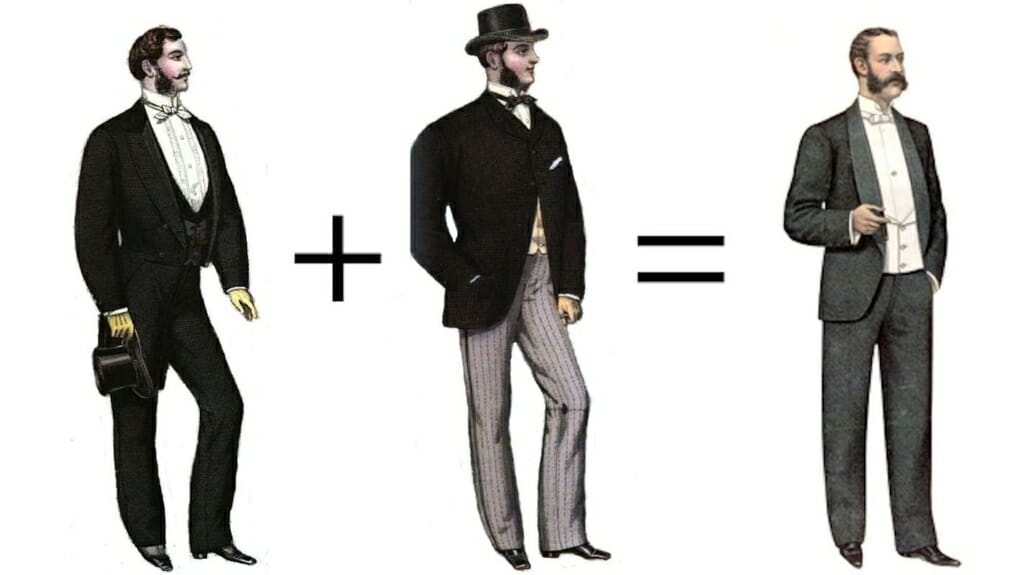
The American Premiere of the Evening Lounge Jacket
The only known record of the jacket’s export from England is an essay from the Tuxedo Park archives about an 1886 summer visit to that country by two of its residents, millionaire coffee broker James Brown Potter and his actress wife Cora. Upon being introduced to the couple at a court ball, the womanizing Prince of Wales was apparently taken with Cora’s renowned beauty and invited the couple to dinner at Sandringham. When Mr. Potter asked his host for advice on what to wear for such an occasion, the Prince referred him to his tailors Henry Poole & Co to be fitted for a short evening jacket. Mr. Potter then brought the innovation back home to Tuxedo Park, a private residential country club established a year prior by a group of prominent New Yorkers.
The dinner jacket’s subsequent introduction to the nation at large can be definitively traced to Tuxedo Park thanks to its popular American name but the specifics of its premier have long been clouded by sartorial lore. The confusion originates from an 1886 article in the society newspaper Town Topics which reported that Griswold Lorillard, son of one of the Tuxedo Park founders, showed up to the wealthy enclave’sAutumn Ball that year wearing “a tailless dress coat and waistcoat of scarlet satin, looking for all the world like a royal footman”. According to second-hand sources dating back to at least the 1930s, the coat style was then adopted by Society as the popular evening jacket we know today.
In actual fact, the Town Topics article has been misinterpreted because the “dress coat” mentioned was a period reference to the tailcoat. Consequently, the removal of the tails from a coat that is cut above the waist, worn open in front and fitted tightly would have produced the equivalent of a mess jacket sported by military officers and aforementioned royal servants. It certainly would not have resembled a dinner jacket which is cut below the seat, designed to be buttoned in front and loosely fitted.
The true story of the dinner jacket’s broader debut can be found in another essay in the Tuxedo Park archives. According to the last surviving founder of the club, the public introduction was a low-key affair much more befitting of the jacket’s aristocratic status:
Eventually, after wearing the new jacket for dinner in Tuxedo, some of the early members were bold enough to wear it one evening at a bachelor dinner at Delmonico’s, the only place in New York where gentlemen dined in public at that time. Needless to say, the other diners at Dell’s were astonished, and when they asked what it was the men in short coats had on, they were told, “Oh that is what they wear for dinner up in Tuxedo”. Hearing Tuxedo mentioned, the curious diners quite naturally starting calling the new jacket by that name.
Dual Identity: Distinguishing the Dinner Jacket and Tuxedo
Which brings us to a bone of contention for black-tie purists: its proper name. Despite over a century of insistence by etiquette and sartorial experts that tuxedo is less correct than dinner jacket, the fact is that the latter term did not appear until a couple of years after the supposed nickname did. Specifically, the Oxford English Dictionary cites the first written reference to tuxedo in the August 1889 issue of Sartorial Arts Journal while the first recorded appearance of dinner jacket is dated to the 1891 novel Gerard: or, The World, the Flesh and the Devil. (Technically, the OED is incorrect; the use of “dinner jacket” actually dates back to at least 1844 but it originally referred to a woman’s jacket.)
The misconception about the catchy term’s legitimacy likely stems from the fact that it was adopted largely by the American general public whereas the more refined dinner moniker was preferred by the American elite and, of course, the British.
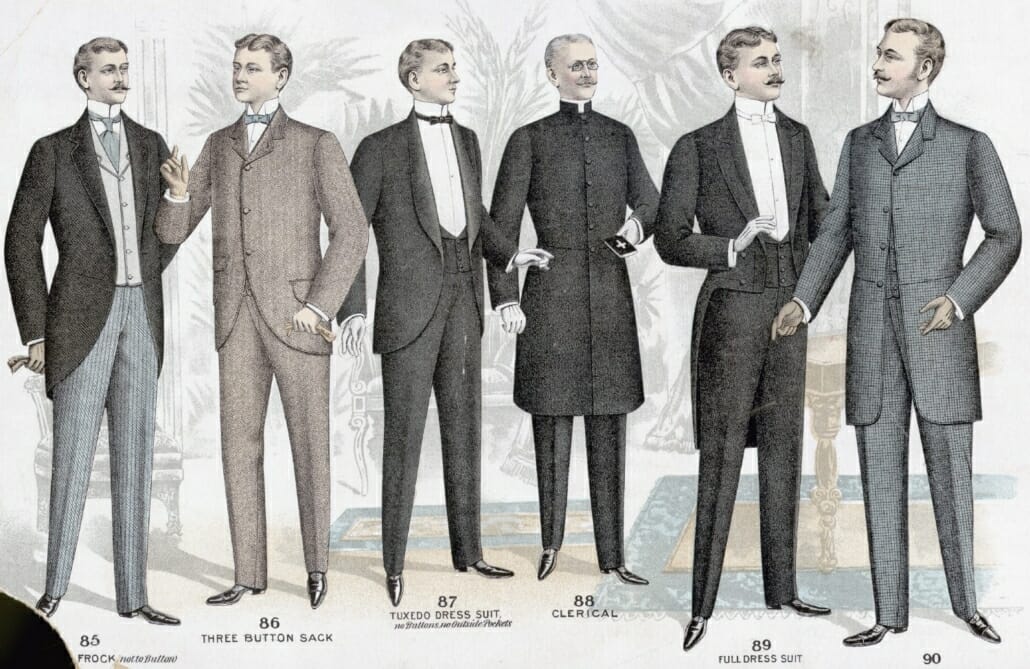
Two-Tier Late Victorian Etiquette: What to Wear and Where to Wear It
Regardless of its name, the new evening jacket caught on quickly among the fashionable upper classes and by the late 1880s was appearing in haberdasher publications and menswear catalogs on both sides of the Atlantic. Following closely on the garment’s expanding popularity were corresponding rules for where and how it was to be worn.
Occasion
The matter of “where” was fairly cut and dry: only in the most casual of settings. As its early British name implied, the short dress lounge was very much an informal alternative to the tailcoat just as its daytime progenitor was formally inferior to the long morning coat or frock coat. As such, it initially had no place in mixed company where women were dressed in their full evening finery and were appropriate only for socializing amongst other men.
But sartorial conventions soon changed as the middle class developed a distinct and casual fashion sense thanks to the availability of mass-produced clothing and the craze for all things athletic. Whether they were unaware of the formal rules of dress or simply didn’t care, the late Victorian bourgeoisie routinely broke them until their transgressions became the norm. Occasion-specific clothing became less common as the lounge suit replaced morning dress during the day and the new evening jacket increasingly usurped the tailcoat. The trend is evident in the 1897 English conduct manual Manners for Men:
The dinner jacket has very largely superseded the dress-coat for home wear and at dinners in houses where one is a familiar guest. It is occasionally seen at the play, too, but it would be incorrect to wear it when accompanying ladies. Etiquette is not now nearly so strict as it used to be in the matter of evening dress in the stalls, private boxes, and dress circle of the theatres. I think this is rather to be deplored but the wave of democracy that has poured over society of late has left its impress in this as in other matters.
The 1896 book The Complete Bachelor: Manners for Men tells a similar story from an American perspective:
The dinner coat . . . is the badge of informality. Formerly it was worn only at the club and small stag dinners and on occasions when ladies were not present. Now it is in vogue during the summer at hotel hops, small informal parties to the play, at bowling parties, restaurant dinners, and, in fact, any occasion not formal.
Attire
Explaining the “how” of wearing a dinner jacket centered upon the recognition of two distinct categories for evening dress. Formal evening dress was defined as a black tailcoat and trousers, black or white waistcoat, white bow tie, white dress shirt, white dress gloves, and black patent leather shoes. In both Britain and America, this was the only evening kit that now qualified as full dress. Informal evening dress differed from formal “in the wearing of the Tuxedo or dinner coat in place of the ‘swallowtail’”, explained The Complete Bachelor, “and the substitution of a black silk for a white lawn tie.” In addition, “White evening waistcoats and Tuxedo coats do not agree; black is only allowable.”
The essence of modern White Tie and Black Tie was now firmly established. Or at least it was in conduct manuals. In practice, the distinction between formal and informal evening attire would take some time to catch up with the theory.
Formal Facts & Dress Decorum
Formal Facts: Master and Servant
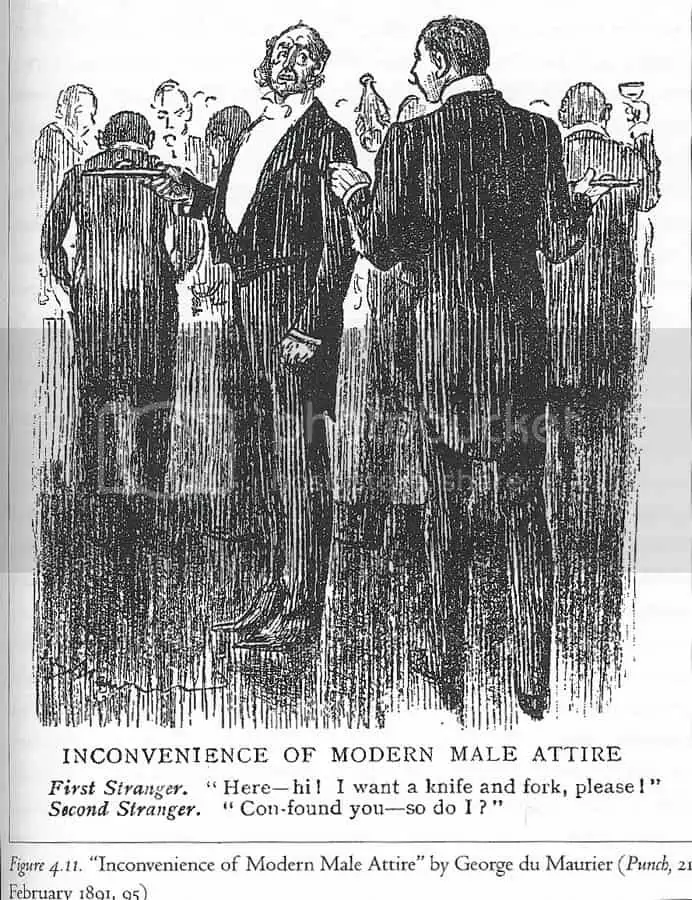
The use of the tailcoat in the livery of waiters and servants caused much confusion by the 1880s. The demand arose for a radical redesign of evening wear according to historian Brent Shannon. In response, a fashion journalist wrote in 1900 that “If a gentleman is a gentleman, no one is likely to mistake him for a waiter, and if he is not a gentleman, what does it matter if the mistake is made?”
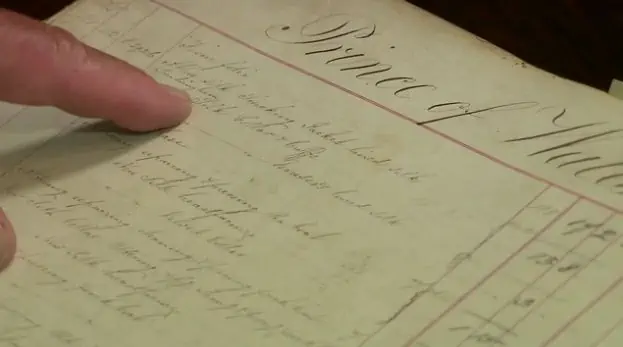
Henry Poole & Co’s original ledger entry for the Prince’s dinner jacket prototype can be seen in this CBS Sunday Morning report on the origin of the tuxedo. The record is also reproduced in Alan Flusser’s 2002 book Dressing the Man.
Dress Decorum: The Smoking Jacket
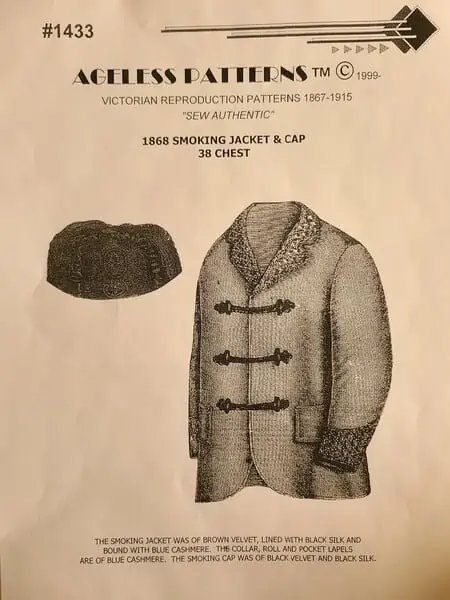
Introduced around 1850, the smoking jacket was a shawl collared, double- or single-breasted coat that men traded with their tailcoat after dinner when leaving the ladies for drinks and cigars. The jacket ensured that their evening coat would not be burned by ashes nor absorb the smell of tobacco which the women found distasteful.
Formal Facts: The Tuxedo was Named After a Club
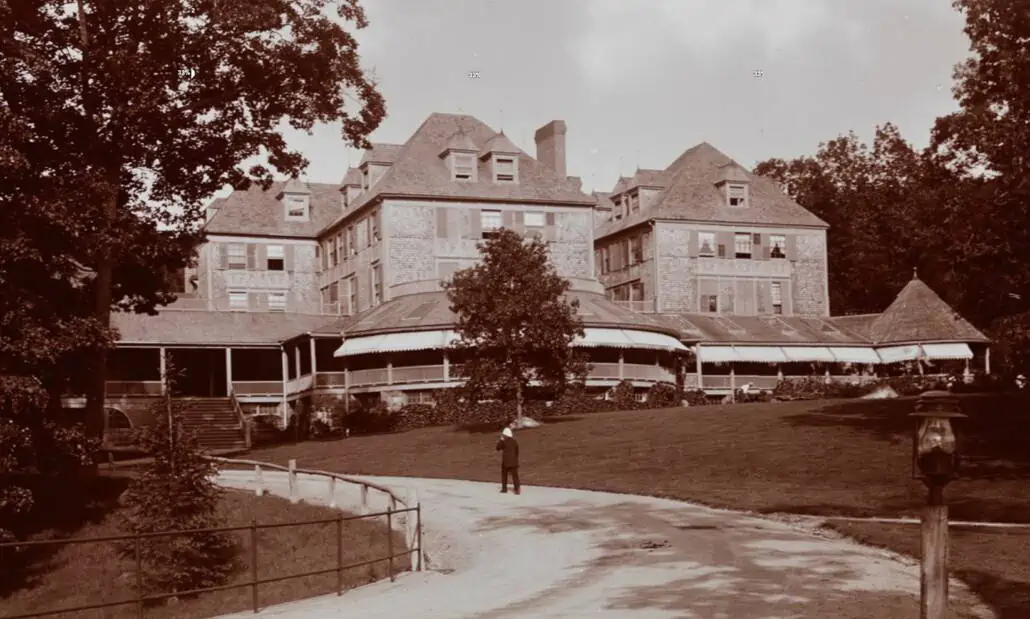
The village of Tuxedo Park takes its name from a Native American word which, according to most sources, means either “place of the bear” or “clear flowing water”, “Bear” being the name of an Indian chief who ruled the region. Likely in reference to its geographic namesake, the noun “tuxedo” was capitalized from its inception in the late 1880s until the 1930s.
Beside its early English names, the new jacket also became known as a “Monte Carlo” on the Continent (particularly in the French Riviera) and a “smoking” in France and many other European countries, the latter term attesting to the coat’s smoking jacket origins.
Quebec francophones prefer the more casual “tuxedo”.
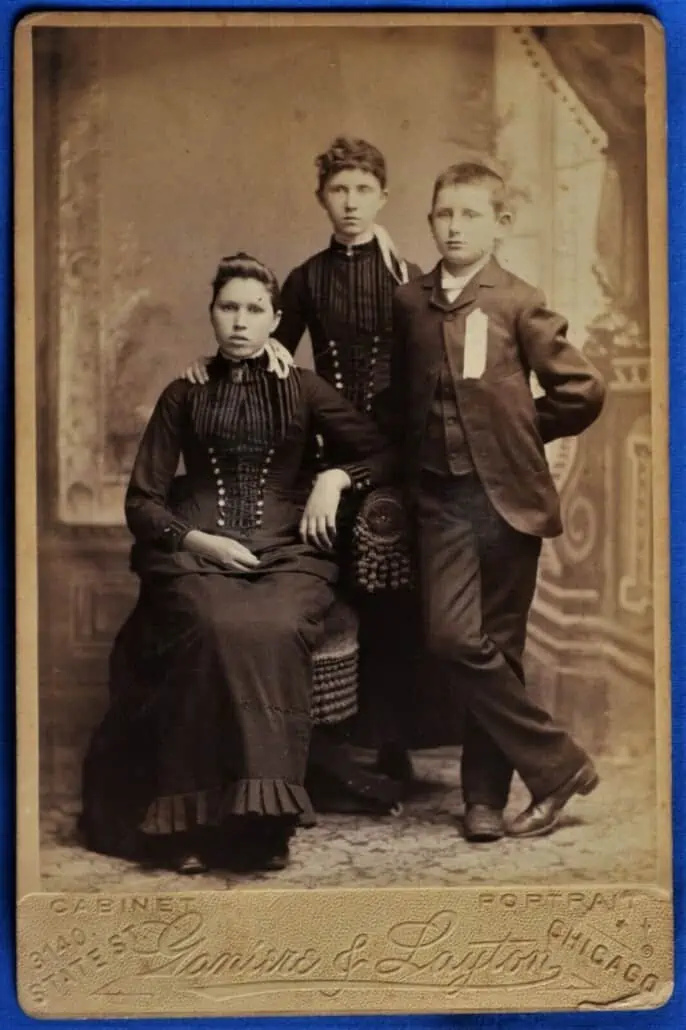
Dress Decorum: Youth Formal Wear
According to The Complete Bachelor, by 1896 the dinner jacket was being worn by boys from the ages of 12 to 17 at which pointthey were considered old enough to “assume the toga virilis” aka the tailcoat.
Explore this chapter: 3 Black Tie & Tuxedo History
- 3.1 Regency Origins of Black Tie – 1800s
- 3.2 Regency Evolution (1800 – ’30s) – Colorful Tailcoat & Cravat
- 3.3 Early Victorian Men’s Clothing: Black Dominates 1840s – 1880s
- 3.4 Late Victorian Dinner Jacket Debut – 1880s
- 3.5 Full & Informal Evening Dress 1890s
- 3.6 Edwardian Tuxedos & Black Tie – 1900s – 1910s
- 3.7 Jazz Age Tuxedo -1920s
- 3.8 Depression Era Black Tie – 1930s Golden Age of Tuxedos
- 3.9 Postwar Tuxedos & Black Tie – Late 1940s – Early 1950s
- 3.10 Jet Age Tuxedos – Late 1950s – 1960s
- 3.11 Counterculture Black Tie Tuxedo 1960s – 1970s
- 3.12 Tuxedo Rebirth – The Yuppie Years – 1970s
- 3.13 Tuxedo Redux – The 1980s & 1990s
- 3.14 Millennial Era Black Tie – 1990s – 2000s
- 3.15 Tuxedos in 2010s
- 3.16 Future of Tuxedos & Black Tie
